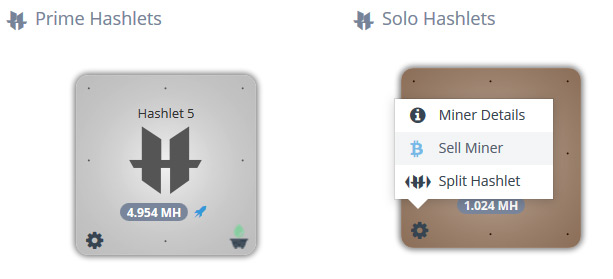Some Crypto-Mining Operations Are Not What They Say They Are OP-ED Some Crypto-Mining Operations Are Not What They Say They Are
Bitcoin and cryptocurrency mining has become a very competitive industry, and the amount of processing power hashing away to mine these digital assets is truly amazing. However over the years since the inception of GPU and ASIC mining, essentially when home mining turned into an industry, the cryptocurrency mining space has been riddled with fraudulent operations and people pretending to be massive mining facilities when they don’t even own a single miner.
Also read: Altcoins Are Dying
Phony Crypto-Mining Rigs & Massive Facilities: The Tale of Mining Vaporware
If you know about cryptocurrencies then you surely have heard about mining and the mega-competitive industry that surrounds this process of minting new digital assets like bitcoin, litecoin, and ethereum. Between the BCH and BTC network alone, miners are processing an average hashrate of 45 exahashes per second. However, over the years there have been a lot of fraudulent individuals and operations within the mining industry claiming to be something they’re not.

We recently wrote about some sketchy blockchain projects that send cryptocurrency publications press releases, and these clown projects get front page articles even though their operations are pure vaporware. In the mining sector, there are some shady operations that profess they have a huge facility with thousands of SHA256 miners churning away at the bitcoin network, but there have been many instances where individuals have found these warehouses filled with miners don’t even exist. Some of these fraudsters have even used pictures of other people’s mining operations so they can make people believe they have a facility filled with ASIC miners.
GAW Miners and Hashlets
A few years ago a lot of people from the cryptocurrency community were scammed by the firm GAW Miners and its related companies. The founder of GAW Miners Joshua Garza started out as a simple mining hardware reseller, and suddenly claimed to own massive mining facilities and the company started a cloud-mining operation called “Hashlets.” There was one big problem, the operations were seemingly faked with photoshopped pictures, and his projects were bolstered by a mess of lies pushed by Garza and his associates. Of course due to these factors of fabrication, the company’s cloud-mining products called ‘Hashlets’ never paid out. The US Securities and Exchange Commission eventually charged Garza with fraud and running a Ponzi scheme.

Hashocean’s Exit Scam
Another shady venture that started in 2014 was another cloud-mining operation called Hashocean. The Hashocean team for years claimed to have six super-large mining farms located all around the world, and for a year or so it became a very large business operation as far as contract sales were concerned. Then two years ago in July of 2016, the company abruptly halted all payouts and the site silently went offline. Hashocean was then accused of being an ‘exit scam.’ Moreover, even though the operation lasted two years according to Bitcoincloudmining.org, Hashocean had a horrible reputation for paying out, even when the site was alive and well. After the site went down so-called core members of the Hashocean team claimed they were ‘hacked’ and promised to allow withdrawals but nothing ever materialized.

Fabricated Mining Rigs
Another prevalent scam is when people promote a new mining machine that supposedly outperforms every mining rig on the market, but the machine doesn’t really exist. Just like some legitimate mining manufacturers, scam machine sellers have a pre-order for their first batches of super-efficient miners. Back in May of 2017, news.Bitcoin.com caught three shady websites that were all interconnected selling fabricated mining devices. The machines did not exist, but the websites and the people behind them sure did, collecting a couple grand worth of BTC per miner for devices that will never ship out. Foxminers, UFO Miners and Minerslab all sold the same machines with different logos but the logos were photoshopped on older miners manufactured in the past like Zeus Miners.

‘The Largest Miners’
Even now pretend mining operations are still using the same old smoke and mirror tactics to make themselves look bigger than they are. For instance, to this day there are many sketchy press releases sent to cryptocurrency publications that consist of firms claiming to be the biggest data centers in Canada or the US. But there are never any pictures sent with these press announcements, and the locations of these facilities are never truly publicized, but yet these firms always claim to be the ‘largest mining facility in North America.’
If people can’t verify that these mining operations actually exist, and a press release claims to be the region’s largest crypto-mining facility by capacity, and publications print this garbage based on faith, then something is wrong. The cryptocurrency industry has a bunch of sketchy people, and some of them claim to be mining behemoths.
If one was to google, “the biggest bitcoin miners in North America,” the person would find there are many firms who claim to be the area’s largest operations. Who is the largest mining operation in that region? — Is it Bitfury, Hut8, Gigawatt, Hashflare, Coinmint, and the many others who have claimed to be the biggest? Without true transparency, real-time documentation of the facilities, and actual witnesses it is likely some of the ‘biggest miners’ in North America and other regions around the world are all talk.

Photoshopped Facilities
The moral of the story is when it comes to mining operations, if it can’t be proven it’s likely someone blowing smoke. A few years ago the financial publication Business Insider’s Rob Price got a tour of the Genesis Mining firm’s mine located in Iceland. Marco Streng, the Genesis co-founder, explained at the time that mining operations have a “major trust issue.” Streng tells Price back in June of 2016:
[Some miners] don’t ever even own their own mining facilities. They just take pictures from other companies, Photoshop them, then pretend they are theirs.
What do you think about miners pretending to be more than what they really are? Let us know what you think about this subject in the comment section below.
Disclaimer: This is an Op-ed article. The opinions expressed in this article are the author’s own. Bitcoin.com does not endorse nor support views, opinions or conclusions drawn in this post. Bitcoin.com is not responsible for or liable for any content, accuracy or quality within the Op-ed article. Readers should do their own due diligence before taking any actions related to the content. Bitcoin.com is not responsible, directly or indirectly, for any damage or loss caused or alleged to be caused by or in connection with the use of or reliance on any information in this Op-ed article.
Images via Shutterstock, Pixabay, Bitcointalk.org, and the Foxminers scam.
Need to calculate your bitcoin holdings? Check our tools section.
CC: Jamie Redman
Comments
Post a Comment